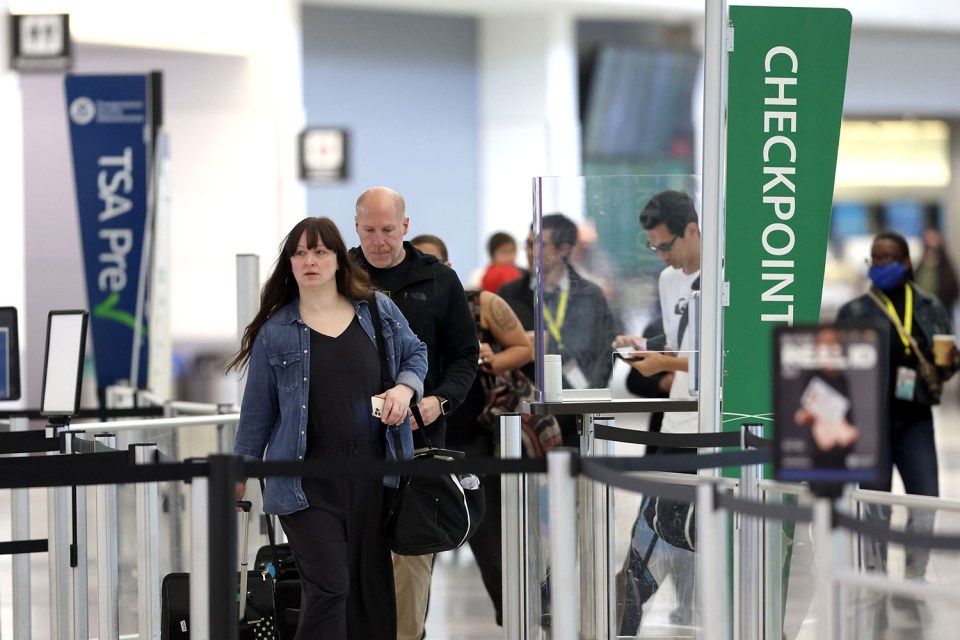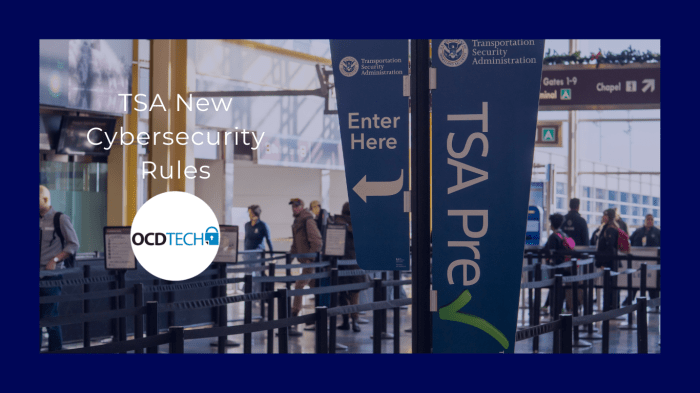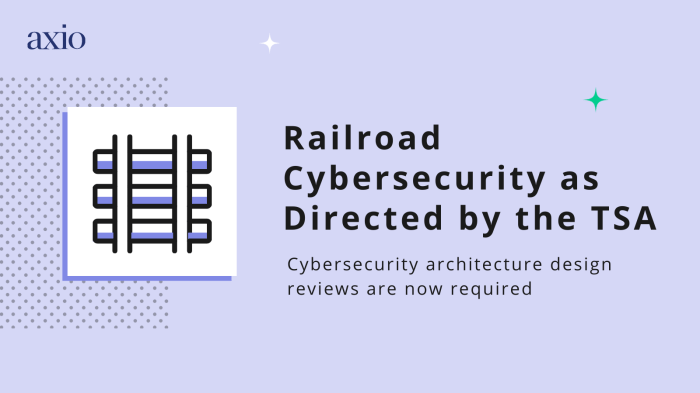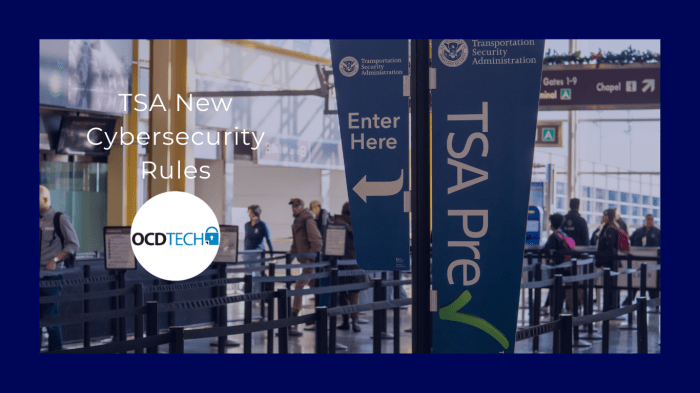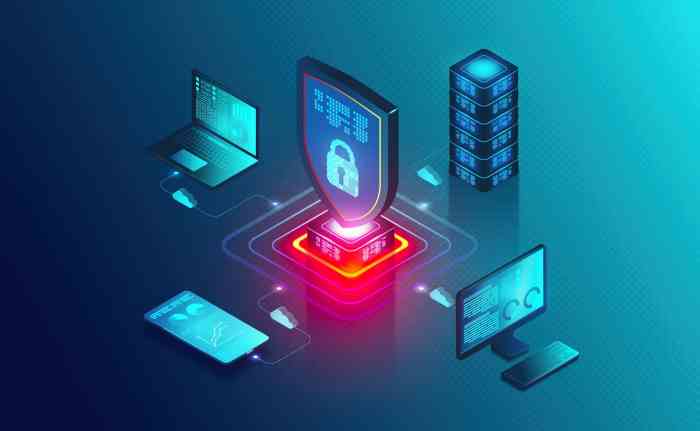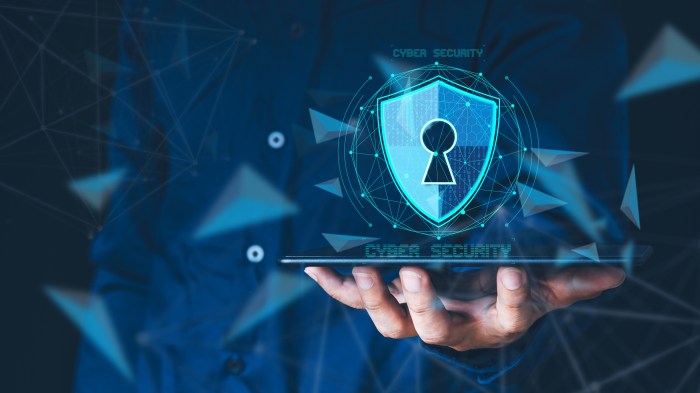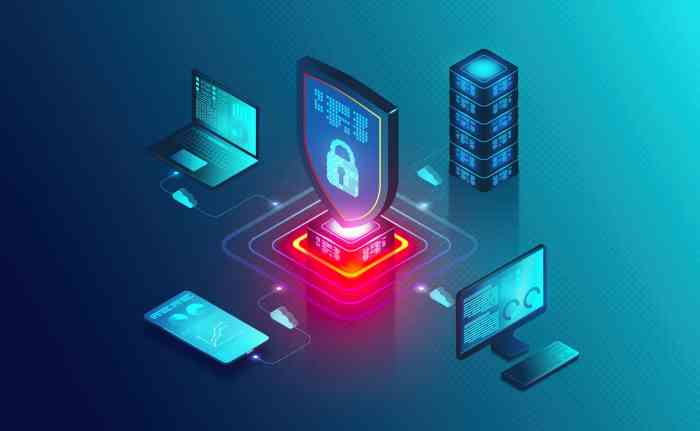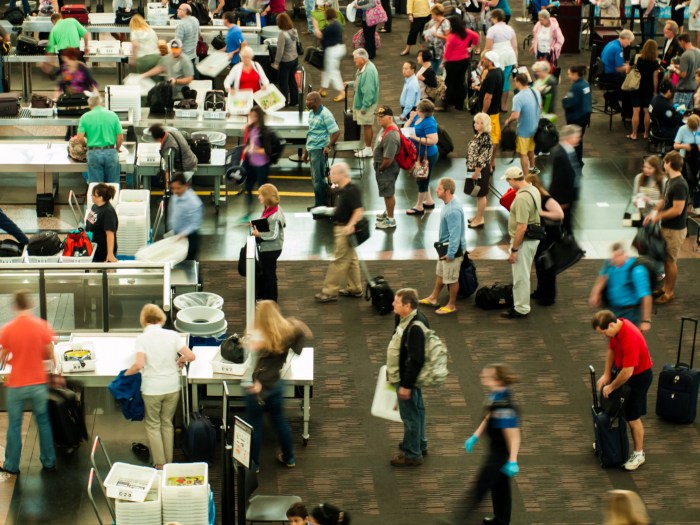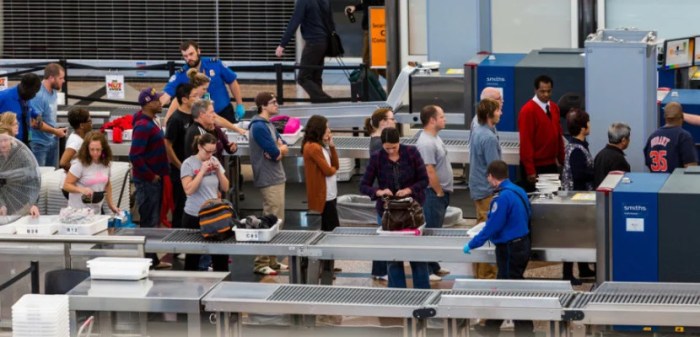TSA PreCheck vs Clear: navigating the airport security maze can be a frustrating experience, but what if there was a way to breeze through? This comparison dives into the world of expedited security programs, examining the benefits and drawbacks of TSA PreCheck and Clear. We’ll explore their eligibility requirements, security procedures, membership perks, costs, and customer experiences to help you decide which program aligns best with your travel needs.
We’ll explore their eligibility requirements, security procedures, membership perks, costs, and customer experiences to help you decide which program aligns best with your travel needs. This guide aims to equip you with the knowledge to make an informed decision about which expedited security program is right for you.
Introduction to TSA PreCheck and Clear
Navigating airport security can often feel like a frustrating obstacle course. Fortunately, expedited security programs like TSA PreCheck and Clear aim to streamline the process, saving travelers valuable time and reducing stress. These programs offer different levels of benefits and vary in their eligibility requirements and costs. This exploration will delve into the specifics of each program, highlighting their unique features and allowing travelers to make informed decisions about which program best suits their needs.TSA PreCheck and Clear are two popular programs designed to expedite airport security screening.
They both provide benefits like faster and more convenient security lines, but they differ in their specific features and eligibility criteria. Understanding these distinctions can help travelers select the program that best meets their travel needs and budget.
Core Functionalities of TSA PreCheck and Clear
TSA PreCheck and Clear both streamline airport security procedures by allowing eligible travelers to bypass traditional security lines. They achieve this through a variety of measures, including expedited screening lanes, the ability to keep certain items in carry-on luggage, and potentially reduced pat-downs. This results in reduced wait times and more relaxed travel experiences.
Benefits of TSA PreCheck and Clear
Both programs prioritize speed and convenience. TSA PreCheck offers benefits such as being able to keep certain items in carry-on luggage, and potentially reduced pat-downs. Clear, on the other hand, often offers additional perks like access to expedited baggage claim and other airport amenities. These expedited processes are particularly valuable for frequent travelers or those with limited time.
Figuring out TSA PreCheck vs Clear can be a real headache, but have you considered the unique atmosphere of a place like Paddy Field Bookshop China ? While the bookshop itself might not directly impact your travel woes, it speaks to the rich culture and thoughtful experiences you can find beyond airport security lines. Ultimately, the best choice between PreCheck and Clear really depends on your travel frequency and budget.
It’s a personal decision, not a matter of which shop is “better”.
The speed and convenience offered by these programs translate into more relaxed travel experiences, reducing stress and allowing travelers to spend more time enjoying their destinations.
Eligibility Requirements for TSA PreCheck and Clear
Eligibility criteria for TSA PreCheck and Clear differ significantly. TSA PreCheck eligibility often hinges on factors like employment in certain industries or a background check. Clear eligibility typically involves a background check and a credit-based evaluation.
Cost and Application Process Comparison
| Feature | TSA PreCheck | Clear |
|---|---|---|
| Cost | $85 for 5 years | $179 for 5 years |
| Application Process | Online application, background check, and biometric enrollment | Online application, background check, credit evaluation, and biometric enrollment |
| Wait Time | Generally 4-6 weeks | Generally 2-4 weeks |
The table above clearly Artikels the comparative costs and application procedures. While both programs provide substantial benefits, the differences in price and application procedures should be carefully considered before making a decision. The cost and the length of time to receive the benefit should be weighed against the desired level of convenience.
Comparing Security Procedures
Navigating airport security can be a frustrating experience, but the TSA PreCheck and Clear programs offer streamlined processes. Understanding the distinct security procedures of each program is key to choosing the best option for your travel needs. This comparison highlights the physical differences in the airport screening experience, the types of checkpoints utilized, and the various screening procedures employed.The fundamental difference between TSA PreCheck and Clear lies in the physical experience at the airport security checkpoint.
PreCheck focuses on expedited screening, while Clear aims for a completely contactless experience. This difference translates to distinct procedures and checkpoint layouts.
TSA PreCheck Security Procedures
TSA PreCheck provides expedited screening at designated lanes, often located near the main security checkpoints. This means travelers can avoid lengthy lines and focus on other pre-flight tasks.
- TSA PreCheck utilizes designated lanes, often with fewer officers than the standard security lanes. This allows for quicker processing of individuals in the lane.
- Screening procedures for PreCheck often include a more focused check of carry-on luggage and personal belongings, while removing the need for removing shoes or belts. Passengers can usually keep liquids and gels in carry-on bags, and other items in their bags as well.
- While the specific procedures can vary by airport, typical screening procedures include metal detectors and potentially advanced imaging technologies (like body scanners) in the dedicated lanes.
Clear Security Procedures
Clear’s focus is on a fully contactless experience, aiming to expedite the entire process. This involves utilizing different checkpoint configurations.
- Clear’s checkpoints often have separate lanes, clearly marked for quicker and more efficient screening. This separate lane allows for a more streamlined and efficient process for passengers in the lane.
- Clear checkpoints often incorporate biometric identification and advanced technology to streamline the process. This could include facial recognition and other advanced technologies that identify and verify the passengers in the lane.
- Security procedures are designed to minimize interaction with security personnel, utilizing advanced technologies such as automated bag screening and touchless kiosks. The passenger typically only interacts with the kiosk for verification and then can continue through the process.
Airport Security Screening Differences, Tsa precheck vs clear
The table below summarizes the key differences in security screening procedures between TSA PreCheck and Clear.
| Feature | TSA PreCheck | Clear |
|---|---|---|
| Checkpoints | Designated lanes within main security checkpoints | Separate lanes, often with advanced technologies |
| Screening Procedures | Metal detectors, potential body scanners; less intrusive than standard | Biometric verification, automated bag screening, minimal interaction with personnel |
| Personal Items | Less stringent rules on liquids, gels, and other items in carry-on luggage. | Minimal interaction with personnel, allowing passengers to move through quickly |
| Experience | Expedited, but still involves some interaction with security personnel | Fully contactless, streamlined experience |
Membership Benefits and Perks
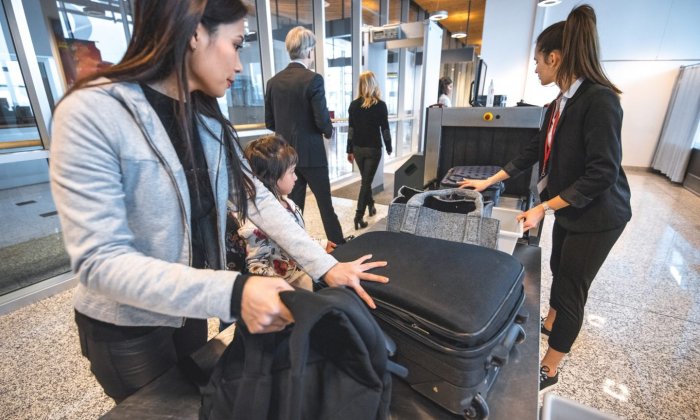
Choosing between TSA PreCheck and Clear often comes down to the specific advantages each program offers. Understanding the membership perks and how they translate to smoother airport experiences is crucial for making an informed decision. These programs are designed to streamline security, and the benefits vary in scope.
TSA PreCheck Benefits
TSA PreCheck provides expedited security screening, granting members access to dedicated lanes at airports. This is a significant advantage, especially during peak travel times.
- Expedited Security Screening: TSA PreCheck members bypass traditional security lines, often experiencing significantly reduced wait times. This can mean the difference between a quick, stress-free departure and an hour spent standing in line. For example, a traveler who is part of a group may avoid significant delays in departure, allowing the group to catch their flight on time.
- Priority Screening Lanes: PreCheck members utilize designated lanes at security checkpoints, leading to faster processing times. This means members can get through security quicker, enabling them to relax and prepare for their flight, and potentially giving them extra time for the next part of their journey.
- Reduced Wait Times: The combination of expedited screening and priority lanes often results in considerably shorter wait times. This is particularly helpful during peak travel seasons or at high-traffic airports. Reduced wait times also translate into more time for other activities, such as dining, browsing shops, or simply relaxing.
- Additional Perks (Potential): While not a standard benefit, some airports or airlines may offer additional services or perks to TSA PreCheck members. For example, some airports may have exclusive lounges or amenities specifically for PreCheck members.
Clear Benefits
Clear provides a unique approach to airport security, leveraging advanced technology to expedite the process.
- Automated Screening: Clear uses biometric technology to scan passengers’ identities. This allows members to pass through security without traditional document checks or physical interactions with agents, which often results in faster and more efficient processing. This technology can be faster than traditional procedures. For instance, members who use Clear can potentially avoid having to remove their shoes or take off their belt.
- Personalized Screening: Clear members may experience personalized screening based on their travel history, enhancing their speed through security. The personalized approach to security screening could be beneficial for frequent flyers. A passenger who regularly travels with the same luggage may not need to remove it for inspection each time, reducing processing time.
- Reduced Wait Times: The streamlined processes and use of technology often lead to substantial reductions in wait times for Clear members, providing a considerable advantage during busy periods. This advantage is especially beneficial for individuals traveling with others, allowing the group to minimize time spent waiting in line.
- Additional Perks (Potential): Similar to TSA PreCheck, some airports or airlines might offer special perks for Clear members, potentially including access to dedicated lanes or lounges.
Eligibility and Application Process
Navigating the application process for TSA PreCheck and Clear can feel daunting. Understanding the specific requirements and steps involved can streamline the process and increase your chances of approval. This section details the criteria for each program, the application procedures, and potential obstacles to help you prepare effectively.The eligibility criteria and application processes for TSA PreCheck and Clear differ, impacting the likelihood of approval and the timeline for receiving your membership.
The specific requirements for each program, while similar in some aspects, have nuances that can affect your eligibility.
TSA PreCheck Eligibility
TSA PreCheck aims to expedite the security process for low-risk travelers. Meeting certain criteria significantly increases your chances of approval.
- Citizenship: U.S. citizens, lawful permanent residents, and U.S. nationals are eligible. Other nationalities may be eligible through specific agreements.
- Travel History: A clean travel record is crucial. Prior security violations or incidents may affect approval. Consider any past travel issues that might affect your application.
- Background Check: A comprehensive background check is performed. This involves verifying personal information and travel history to ensure compliance with regulations.
- Application Form: Filling out the TSA PreCheck application accurately and completely is essential. Ensure all requested information is accurate and up-to-date to avoid delays.
TSA PreCheck Application Process
The application process for TSA PreCheck typically involves these steps:
- Online Application: Begin by completing the online application form. Accurate and complete information is critical. Provide all required documents and details to expedite the process.
- Payment: Pay the application fee. The fee is a one-time payment required for the service. Check the official website for current pricing.
- Document Submission: Upload required documents, such as your passport or driver’s license. This step is critical for verification and approval. Verify that all documents submitted are correct and valid.
- Background Check: The TSA will conduct a background check. The timeframe for this process varies, so patience is important. Be prepared for potential delays due to verification processes.
- Approval/Denial: The TSA will notify you of the decision. A denial can be appealed, if necessary, under specific circumstances.
Clear Eligibility
Clear, a newer program, focuses on streamlining the security process by employing advanced technologies. Specific eligibility criteria and procedures differ from TSA PreCheck.
Figuring out TSA PreCheck vs. Clear is a travel headache, right? But if you’re heading to Athens for a quick getaway, like the amazing ultimate weekend in Athens , it’s worth the time. The quicker you get through security, the more time you have for exploring ancient ruins and delicious Greek food! Ultimately, the best choice depends on your travel frequency and budget; both offer streamlined security experiences.
- Citizenship: U.S. citizens, permanent residents, and other authorized individuals are eligible, with varying requirements depending on the individual’s status.
- Travel History: Similar to TSA PreCheck, a clean travel history is essential. Prior violations or incidents may impact approval.
- Background Check: Clear also conducts a background check to verify identity and compliance with regulations.
- Verification: A biometric scan, often involving fingerprints or other forms of identification, is used to verify the applicant’s identity. This adds an extra layer of security.
Clear Application Process
The application process for Clear often involves these steps:
- Online Application: Start by completing the online application form, ensuring accurate information.
- Appointment Scheduling: Schedule an in-person appointment for verification. The verification step is often in-person and involves biometric scans.
- Verification: Attend the scheduled appointment to complete the verification process, which typically involves providing biometrics.
- Payment: Pay the application fee. This is a one-time payment for the membership.
- Approval/Denial: Clear will notify you of the decision. If denied, review the reason and consider if an appeal is possible.
Application Comparison
| Feature | TSA PreCheck | Clear |
|---|---|---|
| Application Type | Online | Online & In-Person |
| Documents Required | Passport/Driver’s License, etc. | Passport/Driver’s License, Biometrics |
| Timeline | Variable (weeks) | Variable (weeks/appointments) |
| Verification Method | Background Check | Background Check & Biometrics |
Cost and Renewal: Tsa Precheck Vs Clear
Navigating the costs and renewal processes for TSA PreCheck and Clear can be tricky. Understanding the pricing structures and renewal schedules is crucial for making an informed decision about which program best suits your travel needs and budget. Knowing the frequency of renewal and associated fees helps you plan ahead and avoid unexpected expenses.TSA PreCheck and Clear memberships offer streamlined airport security experiences, but their costs and renewal procedures differ.
Choosing the right program depends on factors such as travel frequency, budget, and desired level of convenience.
Figuring out TSA PreCheck vs. Clear? It’s a travel headache, but navigating card currency payments when traveling can be just as tricky. Thinking about those international credit card transactions, especially when you’re comparing the fees of different payment processors for foreign currency transactions can really affect your budget. Ultimately, choosing between TSA PreCheck and Clear is still a personal decision, based on your travel frequency and comfort level with the process.
card currency payments when traveling are a major consideration. So, weigh the pros and cons of each program, and make the best choice for your trips.
TSA PreCheck Fees
TSA PreCheck membership costs are a one-time application fee and an annual renewal fee. The application fee covers the background check and enrollment process, while the annual fee ensures continued access to expedited security screening. The application fee is typically non-refundable. Annual renewal fees are crucial to maintain your PreCheck status. The annual fee ensures continued access to expedited security screening.
- Application Fee: A non-refundable application fee is charged at the time of enrollment. The amount varies but typically ranges from $85 to $100. This covers the cost of processing your application, background check, and enrollment.
- Annual Renewal Fee: To maintain your TSA PreCheck status, an annual renewal fee must be paid. The current annual fee is $85. Failure to renew within the stipulated timeframe will result in the loss of your PreCheck privileges.
Clear Membership Fees
Clear membership fees differ from TSA PreCheck, with both one-time and recurring costs. The one-time fee covers the initial enrollment process, and the recurring fee ensures ongoing access to the expedited security lane. It’s crucial to understand these costs to accurately budget for your travel plans.
- One-Time Enrollment Fee: The one-time enrollment fee varies, but typically ranges from $175 to $200. This cost covers the enrollment process, background check, and access to the Clear system.
- Annual Renewal Fee: Clear membership requires an annual renewal fee, which typically ranges from $175 to $200. Failure to renew within the stipulated timeframe will result in the loss of your Clear privileges. This annual fee ensures continued access to the Clear security lane.
Renewal Frequency and Process
The renewal process for both programs is straightforward. You need to renew your membership within the specified timeframe to maintain your expedited security privileges. Understanding these renewal periods is crucial to avoid any interruption in your security access.
- TSA PreCheck Renewal: TSA PreCheck memberships typically renew annually. Renewal notifications are usually sent via email or through the TSA website, providing sufficient time to renew your membership before it expires.
- Clear Renewal: Clear memberships also renew annually. Renewal notifications are typically sent via email or through the Clear app. Clear also provides online access to renew your membership, ensuring a seamless renewal process.
Comparison Table
The following table summarizes the costs and renewal periods for both TSA PreCheck and Clear memberships.
| Feature | TSA PreCheck | Clear |
|---|---|---|
| Application Fee | $85-$100 (one-time) | $175-$200 (one-time) |
| Annual Renewal Fee | $85 (annual) | $175-$200 (annual) |
| Renewal Frequency | Annual | Annual |
Customer Experiences and Reviews
Customer feedback is crucial in evaluating the effectiveness of TSA PreCheck and Clear. Understanding the experiences of those who use these programs helps us identify strengths, weaknesses, and areas for improvement. Positive experiences encourage continued use, while negative ones highlight potential issues that need addressing. This section examines a range of customer experiences, both positive and negative, drawn from various online sources.
Positive Experiences with TSA PreCheck
Customer experiences with TSA PreCheck often revolve around speed and convenience. Many report significantly shorter wait times at security checkpoints, allowing them to get through airport security more quickly. This time savings is a major benefit, especially for travelers on tight schedules. Testimonials frequently highlight the reduced stress and anxiety associated with the expedited security process. A common theme is the ease of use, with travelers noting that the application and enrollment process is straightforward.
Positive Experiences with Clear
Clear, while newer than PreCheck, also receives positive feedback. Customers appreciate the touchless scanning technology, often citing its speed and efficiency as key advantages. Some rave about the reduced wait times and streamlined process, particularly during peak travel periods. Many value the convenience of not having to remove their shoes or laptops, which is especially helpful for families traveling with young children.
Negative Experiences with TSA PreCheck
Despite the general positive sentiment, some users have reported negative experiences with TSA PreCheck. Issues sometimes include difficulty with the application process, long wait times for approval, or even instances where PreCheck benefits were not consistently applied. A common complaint is the perceived lack of consistency in the application of PreCheck privileges across different airports and security checkpoints.
Negative Experiences with Clear
Similar to TSA PreCheck, Clear has experienced some negative feedback. One frequent concern is the cost of the membership, which some users feel is high relative to the benefits received. Others have reported technical difficulties with the scanning technology, leading to delays or frustration. Occasionally, users have experienced inconsistencies in the application of the program’s benefits.
Importance of Customer Feedback
Customer feedback is essential for evaluating the effectiveness and identifying areas for improvement in both TSA PreCheck and Clear. By carefully analyzing reviews and testimonials, program administrators can gain valuable insights into user experiences and make informed decisions. Positive feedback reinforces successful strategies, while negative feedback points to potential issues that need to be addressed to enhance the overall customer experience.
Summary of Customer Sentiment
| Program | Positive Experiences | Negative Experiences |
|---|---|---|
| TSA PreCheck | Speed, convenience, ease of application, reduced stress | Application difficulties, inconsistent application, long wait times for approval |
| Clear | Speed, touchless technology, convenience | High cost, technical difficulties, inconsistent application |
Alternatives and Recommendations
Choosing between TSA PreCheck and Clear often boils down to personal travel habits and priorities. While these expedited security programs offer significant time savings, they aren’t the only options for streamlining your airport experience. This section explores alternative solutions and factors to consider when making your decision.Understanding your individual travel needs and frequency is key to determining the most effective approach.
A one-time traveler might not see the value of a membership, while a frequent flyer could find substantial savings in time and money.
Alternative Expedited Security Options
Several alternative options exist for those not eligible for or interested in TSA PreCheck or Clear. These solutions may not provide the same level of ease, but they can still help reduce wait times.
- Using a dedicated TSA PreCheck line: Even if you don’t have the membership, many airports designate separate lanes for TSA PreCheck-eligible travelers. This allows for a quicker screening process without requiring a membership.
- Packing strategically: Taking the time to pack light and strategically can minimize the time spent at security checkpoints. For example, liquids in small containers and electronics in a separate bag will make the screening process smoother.
- Arriving early: This is often the most reliable method for avoiding delays. Allowing ample time before your flight can help you navigate security lines without added stress, even without pre-screening programs.
- Checking your luggage: This isn’t always the most convenient option, but checking your bags will often reduce the time spent at the security checkpoint.
Comparing TSA PreCheck and Clear for Specific Scenarios
The best choice between TSA PreCheck and Clear depends on your individual circumstances.
| Scenario | Better Choice | Reasoning |
|---|---|---|
| Frequent flyer with a family and lots of checked luggage | TSA PreCheck | TSA PreCheck typically allows expedited screening for both passengers and checked bags. The convenience of not needing to wait in long lines for both the passenger and checked baggage is a significant advantage. |
| Traveling alone with a carry-on and a need for a fast, mobile-first approach | Clear | Clear’s mobile-first approach, with quick scanning and reduced wait times for carry-on items, is well-suited for solo travelers focused on efficiency. |
| Traveling internationally with multiple flights and layovers | TSA PreCheck | International travel frequently involves multiple airports and security checkpoints. The consistent expedited processing of TSA PreCheck across various airports offers more reliability and reduces delays. |
| Traveling with a diverse group, including children and elderly individuals | TSA PreCheck or Clear (depending on airport facilities) | Both programs can offer significant time savings for larger groups, although the availability of dedicated lanes for these programs varies by airport. |
Individual Travel Patterns and Needs
Considering your individual travel patterns and needs is crucial when evaluating expedited security options.
Your travel frequency, destination, and personal preferences will significantly influence your decision. Someone who travels internationally frequently might prioritize the consistency of TSA PreCheck across various airports, while someone who flies domestically more often might find Clear’s mobile approach more convenient.
Future Trends and Developments
Airport security is constantly evolving, driven by technological advancements and changing threats. Predicting the precise future of TSA PreCheck and Clear is challenging, but analyzing current trends and potential innovations allows for informed speculation about their adaptation and evolution. The integration of new technologies, like AI and biometrics, could significantly alter the landscape of airport security.The future of airport security will likely be shaped by a combination of factors.
Increased focus on passenger experience and efficiency is likely, as is the incorporation of innovative security technologies to enhance screening procedures. This creates an interesting dynamic for programs like TSA PreCheck and Clear, forcing them to adapt or risk becoming obsolete. Understanding these trends is crucial for travelers and the programs themselves to prepare for future challenges and opportunities.
Potential Developments in Airport Security Screening
Current security procedures, while effective, are often perceived as time-consuming and inconvenient. Future developments could focus on streamlining the process, reducing wait times, and enhancing passenger experience. These changes could include the expanded use of advanced technologies, such as AI-powered screening tools and biometric identification systems.
TSA PreCheck Adaptation
TSA PreCheck, designed to expedite the screening process for low-risk travelers, will likely adapt by incorporating new technologies into its procedures. Imagine kiosks utilizing AI facial recognition to verify traveler identities, reducing the need for physical documentation. The program might also incorporate mobile apps for easier and more convenient enrollment and access to expedited screening. Furthermore, increased integration with existing databases to enhance background checks and security measures will be a crucial aspect.
TSA PreCheck could potentially expand its scope to include other security-related services, such as baggage screening, to offer a more holistic and convenient experience for travelers.
Clear Adaptation
Clear, focused on a faster and more personalized experience, will likely continue to leverage its strengths by integrating the latest advancements in security technologies. Predictably, Clear might explore partnerships with airlines to offer integrated travel solutions, providing a seamless experience from check-in to boarding. This could include personalized boarding passes and expedited check-in processes, further enhancing the convenience of the program.
Moreover, Clear might offer additional perks and services to enhance its value proposition for premium travelers, potentially including exclusive lounge access or other travel-related benefits.
Potential Future Trends Table
| Trend | TSA PreCheck | Clear |
|---|---|---|
| Increased use of AI and biometrics | Integration of AI-powered facial recognition kiosks for faster verification. | Implementation of AI-driven passenger profiling for personalized security protocols. |
| Mobile-first approach | Development of mobile apps for enrollment, access, and tracking. | Integration with mobile travel apps for seamless check-in and security. |
| Expanded scope of services | Potential partnerships with airlines for integrated travel solutions. | Potential partnerships with airlines for integrated travel solutions, including exclusive perks. |
| Enhanced passenger experience | Focus on streamlined processes and personalized interactions. | Emphasis on luxury and efficiency, with dedicated lanes and premium services. |
End of Discussion
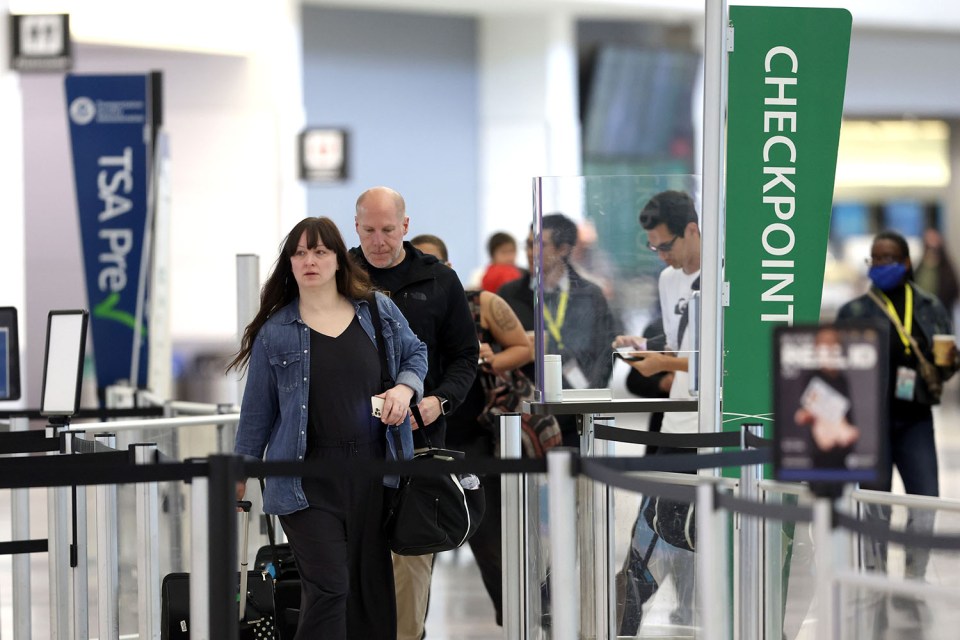
Ultimately, the best choice between TSA PreCheck and Clear depends on your individual needs and travel habits. Consider your frequency of travel, your budget, and your desire for extra airport convenience when making your decision. Weighing the pros and cons, and carefully evaluating the specific details Artikeld in this comparison will empower you to select the perfect expedited security solution for your journeys.
